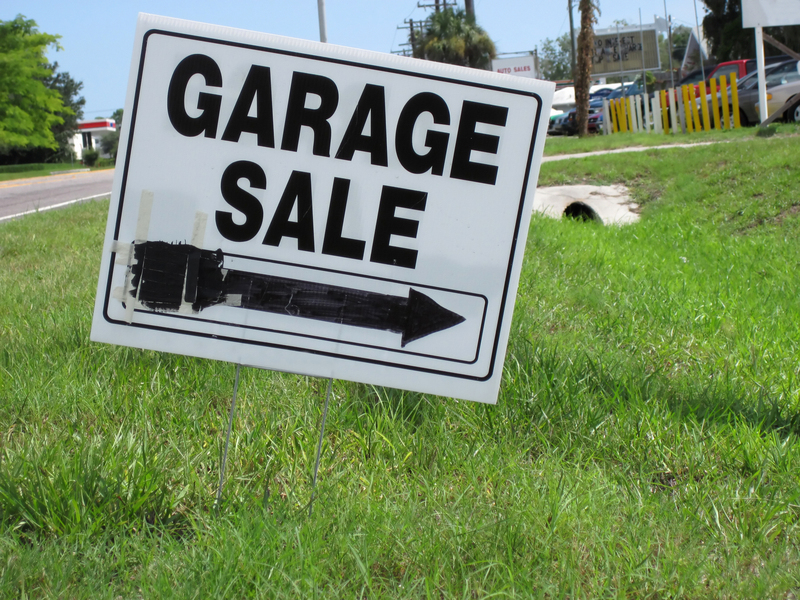Step-by-Step Guide to Recycling Damaged Pots and Pans
Do you have old, scratched, burnt, or broken cookware collecting dust in your kitchen cabinets? Don't toss them in the trash--recycling damaged pots and pans is an eco-friendly way to give them a new life. In this comprehensive guide, we'll walk you through everything you need to know about how to recycle old cookware, why it's important, and creative ways to repurpose what you can't recycle. Read on to discover responsible solutions for your damaged kitchenware!

Why Recycling Pots and Pans is Important
Kitchenware waste can be a big problem. Every year, millions of pots and pans end up in landfills, taking decades or even centuries to break down. Many of these items are made from metals and coatings that can be reused or need to be disposed of safely to prevent environmental harm.
- Reduces landfill waste: Metal pans and pots do not biodegrade, clogging up landfills for generations.
- Conserves resources: Recycling old pots saves energy and raw materials otherwise needed to manufacture new cookware.
- Protects the environment: Reduces toxic leaching from non-stick coatings and metals into soil and water.
- Encourages responsible consumption: Being environmentally conscious promotes community awareness and responsible disposal habits.
Understanding Different Materials in Cookware
Before you start, it's crucial to identify the material composition of your pots and pans. This will determine how and where to recycle or reuse them.
- Stainless steel pots and pans: Durable, widely recyclable, and commonly accepted by scrap metal facilities.
- Aluminum cookware: Lightweight, often recyclable but check for non-removable parts.
- Cast iron pans: Hefty and valuable for scrap, but also ideal for restoration or creative reuse.
- Copper cookware: Sometimes lined with tin or other metals; highly sought after at metal recycling centers.
- Nonstick/Teflon-coated cookware: Trickier to recycle due to the coating; these require special attention.
- Enamel-coated or ceramic pots: Not always recyclable in regular metal streams due to attached coatings or glass.
Step-by-Step Process: How to Recycle Damaged Cookware
Step 1: Assess and Sort Your Damaged Pans and Pots
Begin by thoroughly inspecting your cookware. Sort them by material type--this is crucial as some recycling centers only accept specific metals. Look for labels or stamping underneath (e.g., "stainless steel" or "aluminum").
- Remove plastic handles and lids: These need separate disposal or recycling, as many facilities don't process combined materials.
- Sort by recyclability: Place recyclable metals together and non-recyclables or questionable materials aside.
- Check for local guidelines: Every recycling center has its own rules regarding accepted items and preparation steps.
Step 2: Locate a Nearby Recycling Center
Not all curbside or municipal recycling programs accept cookware--even if it's metal. Search for scrap metal recycling facilities in your area, or **household hazardous waste collection events** for non-standard items.
- Use online resources such as Earth911.com or your local government's recycling website.
- Contact recycling centers directly to confirm what types of pots and pans they accept.
- Ask about preparation requirements (e.g., must handles be removed, do items need to be cleaned?).
Step 3: Prepare Your Pans and Pots for Recycling
Getting your cookware ready improves the likelihood it will be accepted and ensures a smoother recycling process.
- Clean thoroughly: Remove all food residues, grease, and burnt-on food using dish soap and a scrubber.
- Disassemble where possible: Take off any non-metal components, such as rubber or wooden handles, plastic knobs, or glass lids.
- Bundle like items: Group pots and pans of the same material together for easy sorting at the facility.
Step 4: Deliver to the Right Facility
Transport your sorted pots and pans to an approved facility:
- Drive your accepted items to the nearest scrap yard or metal recycling center.
- Look for designated drop-off zones for different metals.
- Follow all instructions from facility staff regarding placement and payment--some scrap yards might even pay for valuable metals such as copper or aluminum!
Step 5: Special Cases: Nonstick and Coated Cookware
Nonstick cookware (like those with a Teflon or ceramic coating) presents a recycling challenge, as many facilities don't process coated metals. Here's how to handle these:
- Check for specialized recycling programs: Some manufacturers run take-back or mail-in programs for old nonstick cookware.
- Remove the coating (if possible): For certain pans, you may be able to sand off the nonstick surface, making the underlying metal acceptable for scrap.
- Contact manufacturers: Major brands sometimes accept old products for responsible disposal and may even offer a discount on new purchases.
- Last resort--household hazardous waste: If you can't recycle it, take it to a hazardous waste drop-off event to avoid contaminating landfills.
Creative Ways to Reuse Old Cookware
Not every damaged pan or pot needs to be recycled. Sometimes, a little creativity can extend its life in your home, reducing the demand for new items.
- Garden planters: Repurpose deep pots or skillets as quirky, rustic planters for herbs and flowers.
- Storage bins: Large old pots are perfect for holding kitchen tools, cleaning supplies, or children's art materials.
- Bird baths or feeders: Shallow pans can be transformed into unique outdoor bird baths or feeders.
- Decorative wall art: Arrange mismatched pans and lids into a kitchen-themed wall display for a creative, vintage look.
- Upcycled crafts: Nonstick pans can become magnetic boards; lids become clock faces or mirrors. The sky's the limit!
By reusing old kitchenware, you're keeping them out of the waste stream and adding a personal touch to your living space.
Tips for Prolonging the Life of Your Pots and Pans
Proper care can greatly extend the lifespan of your cookware, reducing the need for frequent replacement and lessening environmental impact. Here are a few essential tips:
- Use appropriate utensils: Opt for wooden or silicone utensils to prevent scratches, especially with nonstick pans.
- Hand wash if possible: Even dishwasher-safe pans last longer with gentle hand washing.
- Avoid high heat: Excessive temperatures warp or degrade coatings and metals.
- Store carefully: Stack with padding to avoid abrasions and chips.
With careful use, your pots and pans will stay out of the landfill for much longer!
Frequently Asked Questions About Recycling Old Pots and Pans
- Can you recycle nonstick pans in curbside bins?
Typically not--most local recycling programs do not accept coated cookware. Check with your municipality or find a scrap metal facility. - Are cast iron pans recyclable?
Yes! Cast iron is highly desirable for metal recycling. Make sure it's clean and free of non-metal attachments. - Can you recycle pots and pans with plastic handles?
In most cases, you'll need to remove and discard plastic, wooden, or rubber handles, as most facilities require pure metal for recycling. - What about glass lids?
Glass lids are not recyclable with metal cookware. Consult your local recycling program for glass handling policies. - Is there a way to upcycle bad pans?
Absolutely! As discussed above, old cookware has many crafty uses, from planters to art projects.
How to Find Responsible Cookware Recycling Programs
Large manufacturers and brands are increasingly aware of their environmental responsibilities. Some even provide take-back programs or reward incentives for recycling used products.
- Check with brands: Brands like Calphalon, Farberware, and Le Creuset have recycling or renewal programs; explore their websites for options.
- Retail partnerships: Stores such as Sur La Table, Williams Sonoma, and even some local hardware stores run events for recycling kitchenware.
- Community swap or donation events: If your cookware is not totally unusable, donate to shelters, community kitchens, or thrift shops.

Environmental Impact of Proper Cookware Disposal
Throwing out damaged pans and pots not only contributes to landfill increases but also risks environmental contamination. Nonstick coatings can contain chemicals like PTFE or PFAS that leach into the ground, polluting soil and groundwater.
- Recycling metal cookware reduces the need for raw mining and industrial processing, which are energy-intensive and polluting.
- Removing coatings and recycling separately prevents hazardous substances from entering the environment.
Your small efforts in recycling old cookware make a big difference in protecting our planet.
Conclusion: Make a Positive Impact by Recycling Damaged Pots and Pans
Now that you're equipped with this step-by-step guide to recycling your damaged pots and pans, you can make sustainable choices with your old cookware. Remember:
- Sort by material and remove non-recyclable parts.
- Find the right recycling facility or responsible brand program.
- Repurpose creatively whenever possible.
- Take special care with coated and nonstick items.
- Spread the word with friends and family to amplify your positive environmental impact!
Every pan you recycle is a step toward a cleaner, greener future. Don't let your old pots and pans go to waste--recycle today!
Additional Resources
Start your cookware recycling journey now and become a champion for a sustainable planet.